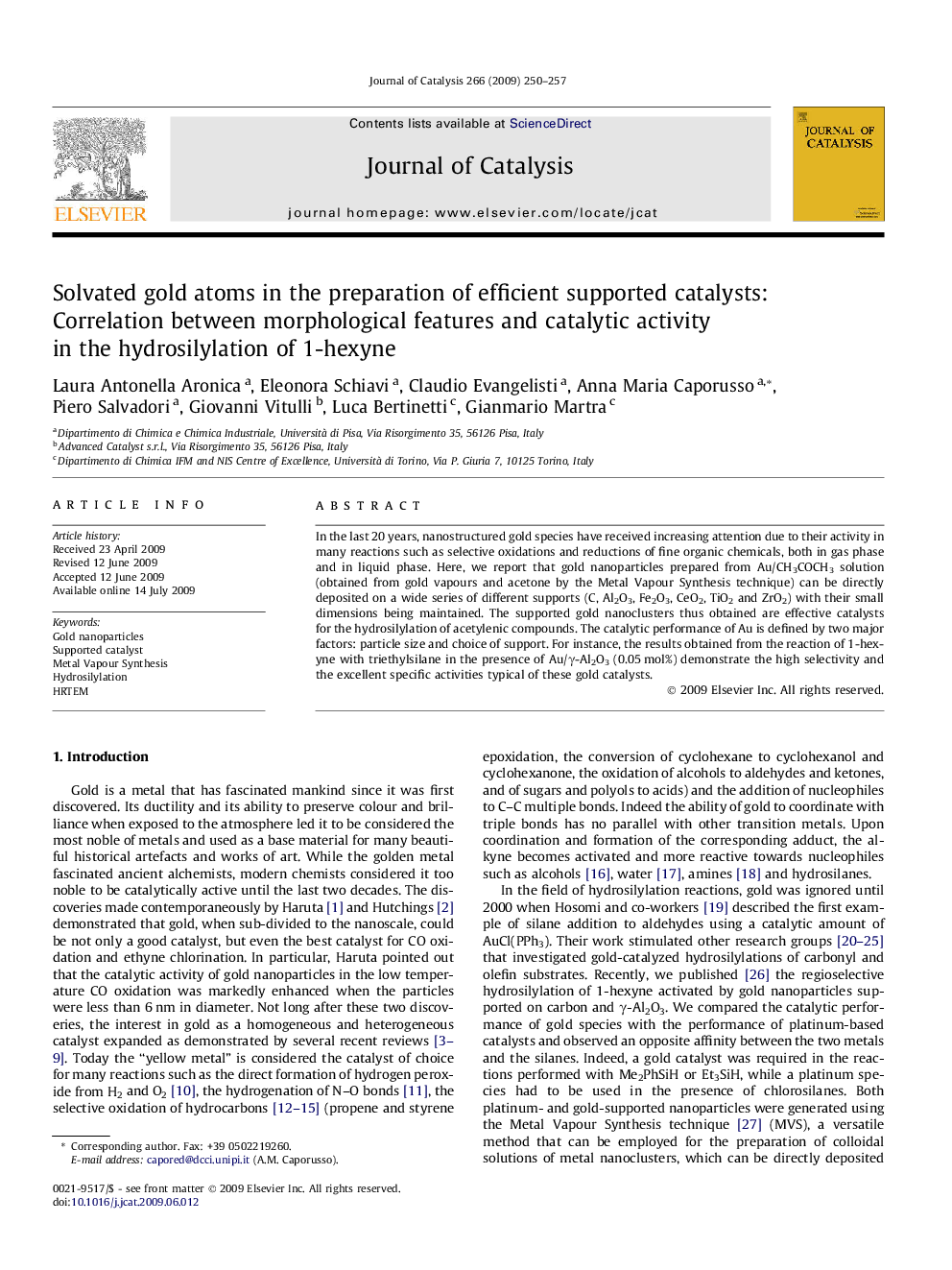| Article ID | Journal | Published Year | Pages | File Type |
|---|---|---|---|---|
| 62589 | Journal of Catalysis | 2009 | 8 Pages |
In the last 20 years, nanostructured gold species have received increasing attention due to their activity in many reactions such as selective oxidations and reductions of fine organic chemicals, both in gas phase and in liquid phase. Here, we report that gold nanoparticles prepared from Au/CH3COCH3 solution (obtained from gold vapours and acetone by the Metal Vapour Synthesis technique) can be directly deposited on a wide series of different supports (C, Al2O3, Fe2O3, CeO2, TiO2 and ZrO2) with their small dimensions being maintained. The supported gold nanoclusters thus obtained are effective catalysts for the hydrosilylation of acetylenic compounds. The catalytic performance of Au is defined by two major factors: particle size and choice of support. For instance, the results obtained from the reaction of 1-hexyne with triethylsilane in the presence of Au/γ-Al2O3 (0.05 mol%) demonstrate the high selectivity and the excellent specific activities typical of these gold catalysts.
Graphical abstractSupported (C, Al2O3, Fe2O3, CeO2, TiO2 and ZrO2) gold nanoparticles were easily prepared starting from gold/acetone solutions generated according to the Metal Vapour Synthesis technique. The catalytic activity of Au nanoclusters was tested in the hydrosilylation of 1-hexyne, and it resulted influenced by two major factors: particle size and support selection.Figure optionsDownload full-size imageDownload high-quality image (82 K)Download as PowerPoint slide
